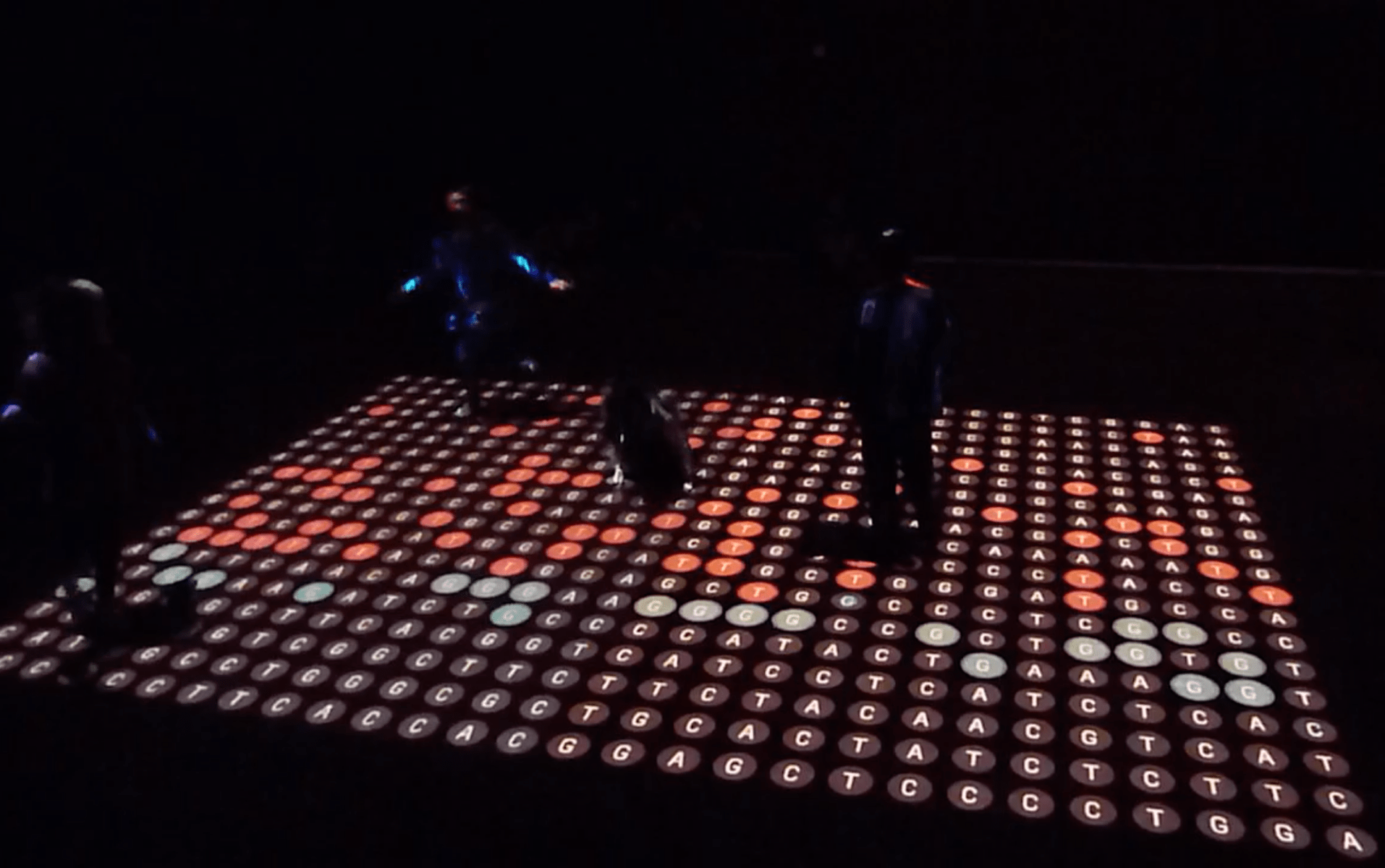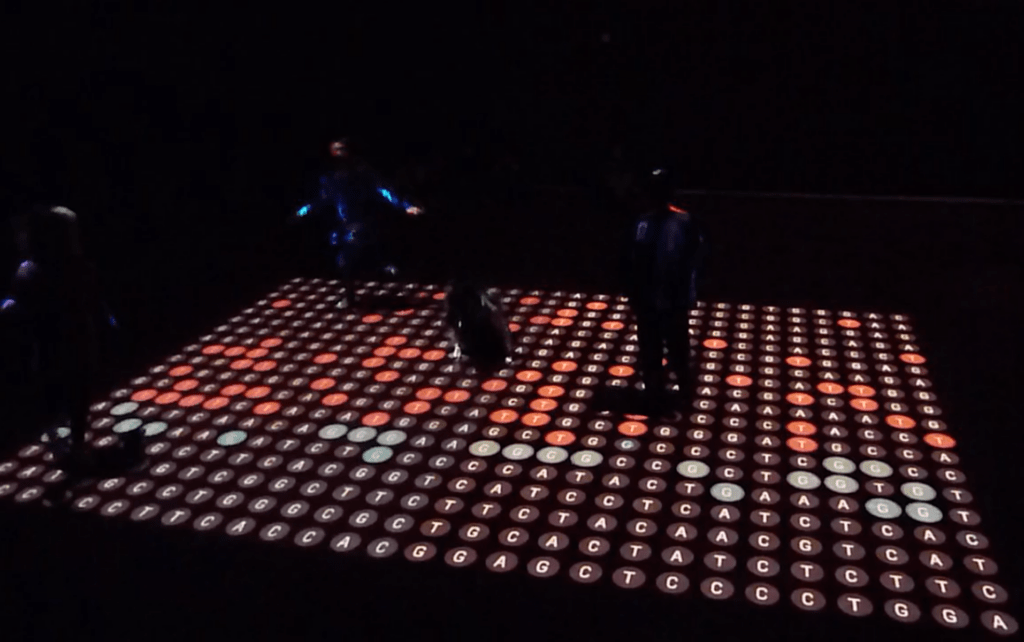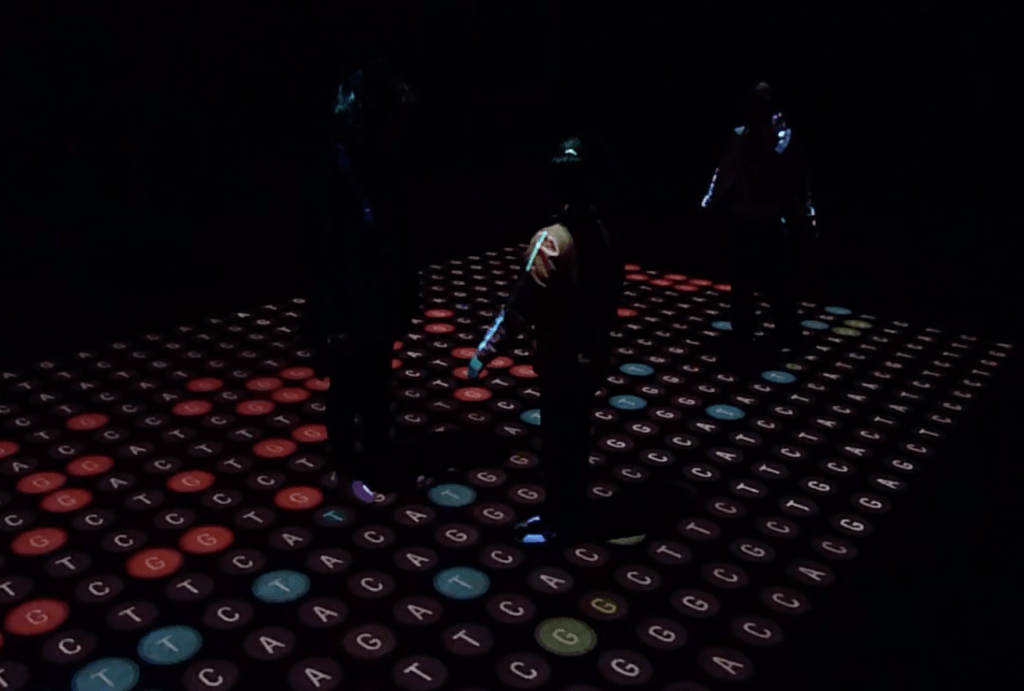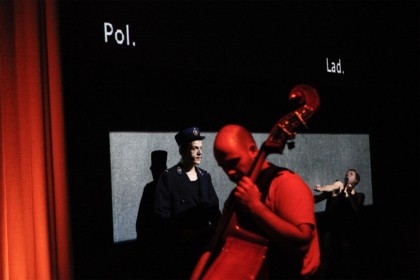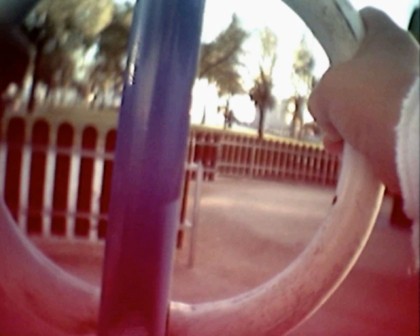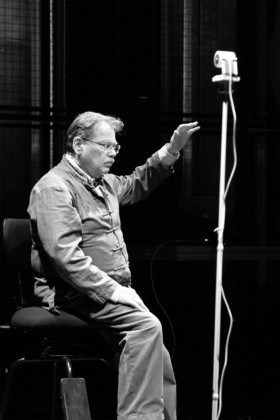At first glance, ORF # 1 is an interactive space where music is produced according to people’s positions in relation to each other. A network of letters (A, T, C, G) (representing DNA nucleotides) are projected onto the floor and when people enter the space they activate a sequence of letters.
Each sequence of letters corresponds to sound sequences and users permanently redefine the beginning and end of messages and, therefore the duration, timbre, rhythm, volume and tempo of musical phrases. The user position defines the start and end of each sequence. If there are two people in the space, a sequence is generated between them. If there are more than two people in the space, two sequences are generated and so on. If there is only one person, the sequence starts at the user’s position and stops at the end of the network. A color code identifies each different sequence.
The environment invites people to explore the space, but, above all, it creates a playful atmosphere where the interaction between people produces musical effects and enhances non-verbal communication.
At a metaphorical level ORF # 1 suggests a journey to the “roots of happiness”. The letters projected on the floor are the sequence of the 5-HTT gene, the so-called “happiness gene” that encodes a protein involved in the transport of serotonin, a chemical agent involved in a sense of wellbeing in the brain. Users create new messages using the original gene sequence as a matrix, but redefine them according to the way they relate to each other. The project therefore envisages a poetic reconciliation between nature and education, raising awareness of ourselves through the fusion of science and art.
ORF is the result of a collaboration with Artshare and is supported by Artshare as part of the “Skilledart Project”.
